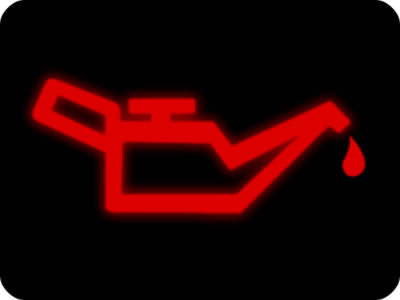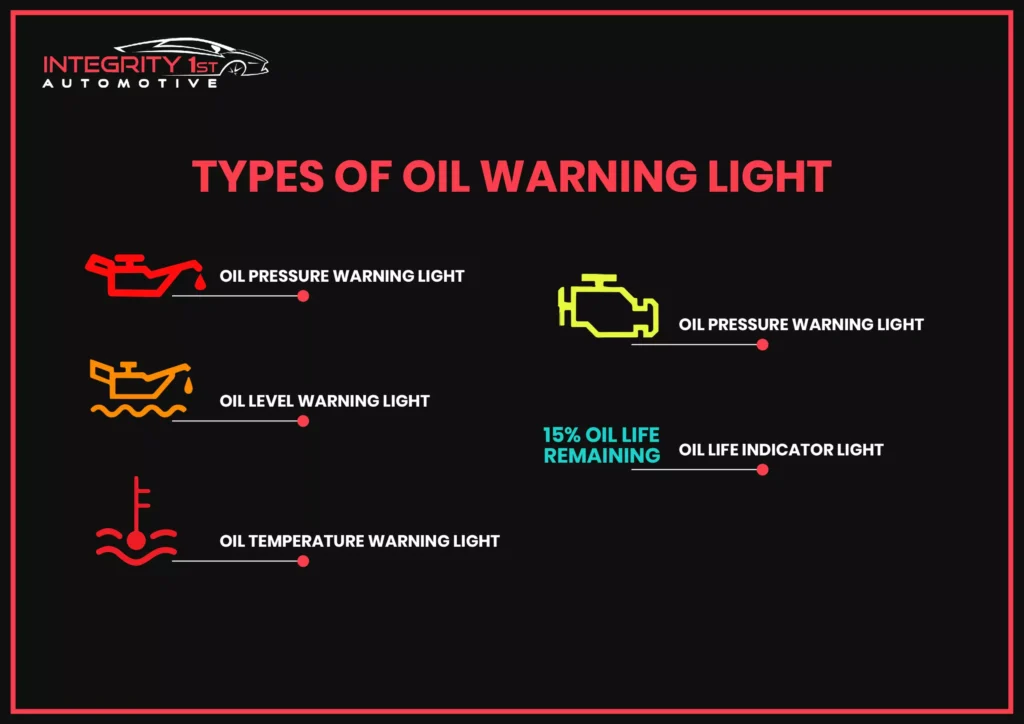Your heart skips a beat when you’re cruising down the road and suddenly, the dreaded engine oil light flickers on your dashboard. You might feel a wave of panic, or maybe a surge of confusion.
What does it mean? Is your engine about to fail? Relax. You’re not alone in this. Many drivers face this situation, and knowing exactly what to do can save you from costly repairs and stress. You’ll learn the crucial steps to take when your engine oil light comes on, ensuring your car runs smoothly and safely.
Stay with us and discover how to tackle this issue with confidence and ease.

Credit: www.countryroadauto.com
Immediate Safety Measures
Seeing the engine oil light on can be alarming. It signals a potential issue with your vehicle’s oil system. Immediate action is crucial to prevent damage. Knowing what steps to take can ensure safety and peace of mind.
Safely Pull Over
Find a safe spot to stop your car. Avoid busy roads or intersections. Use your turn signal to indicate your intention to pull over. Drive slowly, keeping an eye on traffic around you. Choose a location where you can park safely. Turn on your hazard lights once you are stationary.
Assess Surroundings
Check your surroundings for any immediate dangers. Look for oncoming traffic or obstacles. Ensure you are visible to other drivers. If it’s dark, use a flashlight to help illuminate your area. Be cautious of wildlife or pedestrians nearby. Keep a safe distance from the road.

Credit: girlingtongarage.com
Checking Oil Level
When your engine oil light comes on, it’s often a sign that your car needs immediate attention. Checking the oil level is crucial to ensure your engine runs smoothly and doesn’t suffer damage. But how do you correctly check the oil level? Let’s dive into the steps to help you confidently manage this task.
Locate Dipstick
The first step is finding the dipstick in your car. Generally, it’s near the engine, easily identifiable with a loop or handle. If you’re unsure, check your car’s manual for the specific location.
Once you’ve located it, pull it out carefully. You might feel a little resistance, but don’t worry—that’s normal. It’s designed to stay in place to prevent oil from splashing out.
Properly Measure Oil
With the dipstick in hand, wipe it clean with a rag or paper towel. This ensures you get an accurate reading.
Reinsert the dipstick fully, then pull it out again. Look at the end: you’ll see marks indicating the oil level. The oil should be between the two marks.
If the oil level is low, it’s time to add more. Make sure you use the right type of oil for your car. Your car’s manual will have this information.
Have you ever wondered how often you should check your oil level? Ideally, do it every month or before a long road trip. It’s a small step that can prevent big problems.
Being proactive about checking your oil level can save you from unexpected breakdowns. Once, my car’s oil light came on during a weekend getaway. A quick check showed low oil, and adding some saved my trip. A simple check can make all the difference!
Inspecting For Leaks
Inspecting for leaks is crucial when the engine oil light activates. Begin by checking under the vehicle for oil spots. Examine the engine area for any signs of oil seepage.
When your engine oil light flicks on, it can be a source of anxiety. One of the first things you should do is inspect for leaks. Leaks can cause oil levels to drop, leading to potential engine damage. Identifying and addressing them promptly can save you from costly repairs and headaches. Here’s how you can get started.Visual Inspection Of Engine
Pop open your hood and take a good look around. Focus on the area around the engine block and oil filter. Do you spot any dark, oily spots or residue? Sometimes, a keen eye can catch what a quick glance might miss. Look for any signs of oil splatter or wetness. These are clear indicators of a leak. In one instance, I noticed a tiny puddle forming near the oil filter. It was a simple fix—tightening the filter did the trick. Have you experienced something similar?Checking Under Vehicle
Once you’re done under the hood, it’s time to get a bit more hands-on. Take a look beneath your car. Do you see any fresh oil spots on your driveway or garage floor? Lay down some cardboard or newspaper overnight. This will help you pinpoint any oil drips. A friend of mine once found a trail of oil leading to his parked car. It turned out to be a loose drain plug. Catching it early saved him from a major repair bill. Inspecting for leaks isn’t rocket science. It’s about paying attention and acting quickly. Have you ever had to deal with an unexpected leak? How did you handle it?Adding Engine Oil
Seeing the engine oil light on can be stressful. It’s crucial to act fast. Adding engine oil is a simple solution. It ensures your car runs smoothly. This guide will help you add oil correctly.
Choosing The Right Oil
Not all oils suit every car. Check your car’s manual first. It lists the recommended oil type. Different oils have different viscosities. This affects the engine’s performance. Look for oil labels like 5W-30 or 10W-40. These labels indicate viscosity levels. The wrong oil can harm your engine. So, always choose wisely.
Steps To Add Oil
First, park the car on level ground. This ensures accurate oil readings. Turn off the engine and let it cool. Open the hood and locate the oil cap. It usually has an oil can symbol on it.
Next, remove the oil dipstick. Wipe it clean with a cloth. Insert it back and pull it out again. Check the oil level on the dipstick. If it’s low, you need to add oil.
Open the oil cap and pour the oil slowly. Use a funnel to avoid spills. Add a little at a time and recheck the dipstick. Stop when the oil reaches the full mark. Once done, secure the oil cap tightly.
Dispose of oil containers responsibly. This keeps the environment safe. Regular checks prevent engine issues. Keep a record of oil changes. This helps maintain your vehicle’s health.
Restarting The Engine
Spotting the engine oil light requires immediate action. Check oil levels and top up if needed. If the light persists, consult a mechanic to avoid damage. Regular maintenance keeps your vehicle running smoothly.
Restarting the engine might seem like a simple task, but when the engine oil light appears, it becomes a critical step in assessing your vehicle’s condition. It’s not just about turning the key; it’s about understanding what your car is trying to communicate. You’re caught in a moment where you need to decide the next steps to ensure your car’s safety and performance.Monitor Warning Light
Before restarting, take a moment to observe the warning light. Is it flashing or steady? A flashing light might indicate a more severe issue than a steady one. Consider how long the light has been on. Has it just appeared, or has it been lingering for a while? This can help you gauge the urgency of the situation. While monitoring, remember that ignoring this light can lead to more significant problems down the road. Would you rather deal with a minor inconvenience now or a major headache later?Listen For Unusual Sounds
As you restart the engine, pay close attention to any unusual sounds. Is there a knocking or ticking sound that wasn’t there before? These could be signs of oil starvation affecting your engine’s components. Unusual sounds might indicate that the oil isn’t circulating properly. Have you ever had a friend mention they ignored a sound only for it to lead to costly repairs? Listening is key. It’s like your car is speaking to you, telling you what it needs. Are you tuned in to what it’s saying? Restarting the engine isn’t just a physical action; it’s a chance to reassess and ensure everything is running smoothly. Will you take the time to listen and act?Seeking Professional Help
Seeing the engine oil light can be worrying. Pull over safely and turn off the engine. Check the oil level and add oil if needed. If the light stays on, consult a professional mechanic to avoid engine damage.
When the engine oil light suddenly flickers on your dashboard, your first instinct might be to panic. It’s a signal that something could be wrong with your vehicle’s engine lubrication. While some might be tempted to handle the issue themselves, seeking professional help is often the most prudent course of action. Why risk further damage when you can have an expert assess and fix the problem?Contacting A Mechanic
First things first, reach out to a trusted mechanic. If you’re on the road, find a nearby service station or auto repair shop. It’s crucial to communicate the issue clearly—mention that the engine oil light came on and describe any unusual noises or behaviors you’ve noticed. When you contact a mechanic, you’re not just getting a repair; you’re gaining peace of mind. Mechanics have the experience and tools to diagnose the problem accurately. They can identify whether it’s a simple oil change or something more serious like a leak or engine wear. Ask yourself: Do you have a reliable mechanic on speed dial? If not, consider this a wake-up call to research and establish a relationship with one.Understanding Repair Options
Once at the mechanic, you’ll need to understand your repair options. A good mechanic will explain the issue in simple terms and outline potential solutions. There might be a need for an oil change, or perhaps a more involved repair if there’s a leak or damaged component. Always ask for a detailed explanation and a breakdown of costs. This way, you won’t be blindsided by unexpected expenses. Compare the options and consider your budget. Would fixing a minor issue now prevent a major repair later? Weighing the costs and benefits can guide you to the best decision for your vehicle and wallet. Remember, addressing engine oil issues promptly can save you from hefty repairs down the road.Preventative Measures
Preventative measures play a crucial role in ensuring your car’s health. Addressing the engine oil light before it turns on can save time and money. Regular checks and maintenance keep your vehicle running smoothly. They also help prevent unexpected breakdowns.
Regular Oil Checks
Checking your oil regularly is essential for engine longevity. Make it a habit to inspect oil levels every month. Low oil can lead to engine damage. Use the dipstick to check the oil level. Ensure the oil is between the minimum and maximum marks. Clean oil means a healthy engine. Regular checks also reveal leaks or burning oil.
Scheduled Maintenance
Scheduled maintenance is vital for engine performance. Follow the manufacturer’s maintenance schedule diligently. This includes changing oil filters and oil at recommended intervals. Clean filters prevent debris from entering the engine. Routine checks help detect potential issues early. This reduces costly repairs and ensures optimal performance.

Credit: www.integrity1auto.com
Conclusion
Seeing the engine oil light can feel alarming. Stay calm and take action. First, safely stop the car. Check the oil level using the dipstick. Add oil if necessary. If the light remains, seek professional help. Ignoring it can harm your engine.
Regular maintenance prevents such issues. A well-maintained car runs smoothly and safely. Always keep a spare oil bottle in your trunk. This simple preparation can save time and stress. Remember, a little care goes a long way. Stay proactive and keep your vehicle in top shape.
